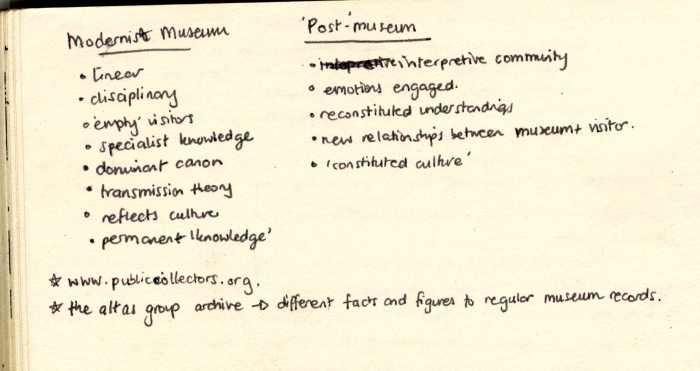Last fall, I spoke with one of my former English teachers about her work with Khan Lab School, the experimental Bay Area campus founded using the philosophy of Salman Khan. I have finally read Khan’s book The One World Schoolhouse, which describes the main problems with the American education system, the potential solutions Khan himself has drawn from the success of Khan Academy, and his vision for the future of K-12 and higher education. While I have some reservations about the proposals from the book and hope I can eventually tour Khan Lab School itself, I respect how clearly Khan explains the drawbacks of the traditional assembly-line model of education and the logic behind his proposed alternatives. Whether or not his One World Schoolhouse will become reality over the next few decades seems beside the point: Khan helps us articulate which parts of our education system cause so much frustration among students and educators alike and challenges our fundamental assumptions about the structure, methods, and objectives of the classroom.
Technology
Recent Study Finds Handwritten Notes Improve Retention

I recently came across this NPR article (one of my former coworkers from OU posted the link using Facebook) about the cognitive differences between handwritten and electronic notes. The article summarizes the results of a recent study from two psychologists from Princeton and UCLA showing that handwritten notes significantly improve how well students synthesize complex information. Notes serve two primary functions: they help us process material while we write down critical details and later provide records of these details when we study for exams and translate face-to-face meetings into products and documents. The authors of the study believe that although electronic notes help students and professionals transcribe more content than handwritten notes, these verbatim records actually prevent note-takers from identifying the main ideas and possible applications of lectures, conversations, etc. Even having more electronic notes did not help most of the students from the study, who took short exams after hearing various Ted Talks; the students with handwritten notes received higher scores regardless of whether or not the two groups studied for the tests beforehand. Click the link below for more information: NPR Handwritten vs. Electronic Notes Article.
Sabbaticals for K-12 Teachers
This editorial from Jessica Anderson, the 2016 Montana Teacher of the Year, claims K-12 teachers should request sabbaticals so they can learn new technologies and instructional methods for their classrooms. Unlike professors, who often arrange sabbaticals for their academic research, K-12 teachers usually seek professional development over the summer and during the school-year. K-12 teachers must accordingly balance between their daily classroom administration and curriculum design responsibilities and their experiments with virtual reality software (Google Expeditions), online flashcards (Study Blue), content management systems (D2L, Moodle, etc.), and practice-problem applications (NoRedInk, IXL, etc.). The limited time and resources teachers can allocate for these “side-projects” necessarily reduces their usefulness, and Anderson states teachers cannot draw their classes into the twenty-first century until K-12 educators and districts properly facilitate the long-term improvement of their employees.

Anderson also addresses the reservations many teachers have about leaving their classrooms for a year. Anderson believes teachers underestimate how much sabbaticals may improve their skill-sets and insists teachers should not feel guilty about temporarily leaving their schools with the long-term objective of returning with applications and techniques that they can share with their coworkers. Many public-school contracts already have options for sabbaticals, and Anderson feels these opportunities are underutilized because teachers cannot see themselves outside the classroom. Those who assume expert teachers always belong inside the classroom may disagree, but I side with Anderson: if one year of research, conferences, and trying new applications yields three-five years of meaningful returns for students, then the K-12 education system should not merely allow but promote sabbaticals for its instructors. I also wonder whether colleges should more-actively support the use of sabbaticals for instructional purposes instead of focusing so intently upon articles and book projects. Click the link below for more details.
Online Adaptive Learning Technology
When educators consider the future of online and hybrid education, they frequently stress how digital platforms might personalize the content and activities provided for individual students. With sophisticated algorithms capable of determining what information students need and how they learn using past results, computer-mediated education programs could design assignments and lectures for each member of the classroom without overburdening teachers who already have nearly-unmanageable workloads. This article discusses the Habitable Worlds course from Arizona State University, which has students explore the historical development of biological organisms and the viability of extraterrestrial life using “digital courseware.” This courseware monitors student progress, presents feedback, and adjusts how its students learn and practice the content of the HabWorlds curriculum. Digital courseware may someday increase the pass-rates for general education classes and improve the quality of mainstream courses, but I question whether software, monitored or otherwise, should make automated decisions about student capabilities and classroom objectives. Click the link below for more information:

Pokemon Go and Augmented Reality, Continued
I wrote the other day about the overwhelming success of Pokemon Go and the applications of Augmented Reality (AR) technology for education, but after I spoke with some friends about my previous editorial, I realized I did not fully express the value of AR compared with any competent Google search. One of my friends asked how my hypothetical AR system differed from static databases of information, and our discussion helped me realize how much I originally undersold the potential of AR.
Scenario 1: You visit the San Francisco Museum of Modern Art and see the following painting inside one of the galleries:

If you read the placard, you might learn the title of the work (Guardians of the Secret), the name of its artist (Jackson Pollack), the date (1943), and some additional information about its context and significance. With AR, you might automatically receive verbal commentary about the painting from professional art historians, examples of other Pollack paintings for live, side-by-side comparisons using your device, and a short video of Pollack splatter-painting. Continue reading
Preschool Computer Programming with Wooden Blocks
This article discusses the gradual integration of computer science into K-12 classrooms and considers how preschools might teach students the basics of coding using colored blocks. The author surveys the objections instructors have raised against screen-based instruction and concludes tactile methods of learning code will not only help students prepare for increasingly-digital schools and workplaces but also harness the benefits of kinesthetic activity for long-term skill development. Much like the recent Google Bloks project, this article calls for means of acquiring online and computer-mediated skills without electronics, which could help schools with smaller budgets and less technically-trained instructors better serve their students. Click the link below for more details.

What Pokemon Go Means for EdTech
The success of Pokemon Go has shown the untapped potential of Augmented Reality (AR) applications, where software developers layer digital components over the real world instead of constructing self-contained virtual environments. Users worldwide have posted pictures of their Pokemon and the physical locations where they were captured, and the principles of augmented reality could support the recent transition away from passive instruction towards interactive education and civic participation within modern education research.

EdTech developers should consider how augmented reality might help students learn more from natural ecosystems, museum exhibits, and even classroom lectures. What if students could directly scan artifacts with their phones so they could learn more about the history and significance of Greek pottery and Native American textiles? What if this same technology could help chemistry students identify compounds inside the laboratory and determine their physical properties?
New Technology from Google EDU
This article discusses four recently-released technologies from Google EDU, whose Google Classroom already has over ten million active users. The Expeditions application lets students and instructors visit virtual locations with relevant information about each site using their cell-phones and cardboard binoculars. I personally hope this project will help schools with increasingly-limited resources provide their students with more meaningful hands-on experiences “outside” the classroom.
EdTech and Technical Communication
The relationship between the subjects of this site, education technology and technical communication, may seem somewhat arbitrary, so I decided I should briefly explain why they fit together. Education technology, and education generally, involves translating content and processes (including writing essays, solving equations, analyzing complex problems, and conducting research) for the students placed under the direction of the instructor. The students themselves then supply direct and indirect feedback about the activities and discussions from the class via surveys, comments, and assessments, and the instructor adjusts his/her content based upon the results.
This negotiation between the expertise and objectives of the instructor and the priorities and preferences of his/her students matches the interaction between the producers and users of interfaces and products. I have always prioritized usability during my technical communication courses because its principles form the backbone of healthy interactions between “technicians” and “laypeople.” While teachers and technicians may have more content-knowledge and experience than students and the everyday users of commercial products, the short-term and long-term performance of end-users remains the best method of assessing the value of instructional and corporate designs.
Education Technology: Costs & Benefits
This article discusses the trade-offs between the interactive, real-world potential of education technology and the costs associated with the purchase and incorporation of technology into the classroom. Participants from the 2016 ISTE (International Society for Technology in Education) Conference debated whether education technology supports or limits complex analysis, and this article raises difficult questions about how schools should evaluate the success of technology initiatives nationwide. Click the link below for more information.
